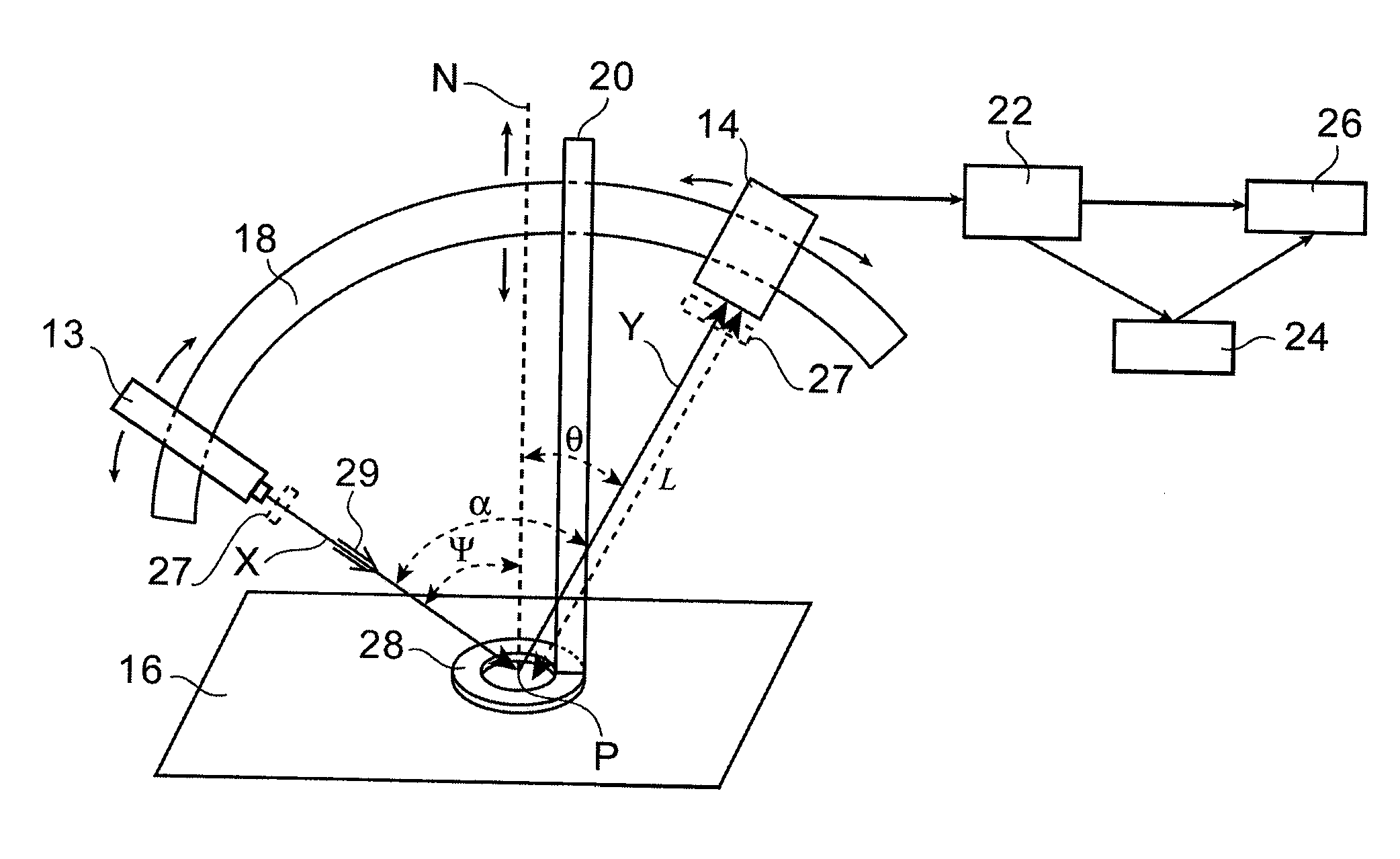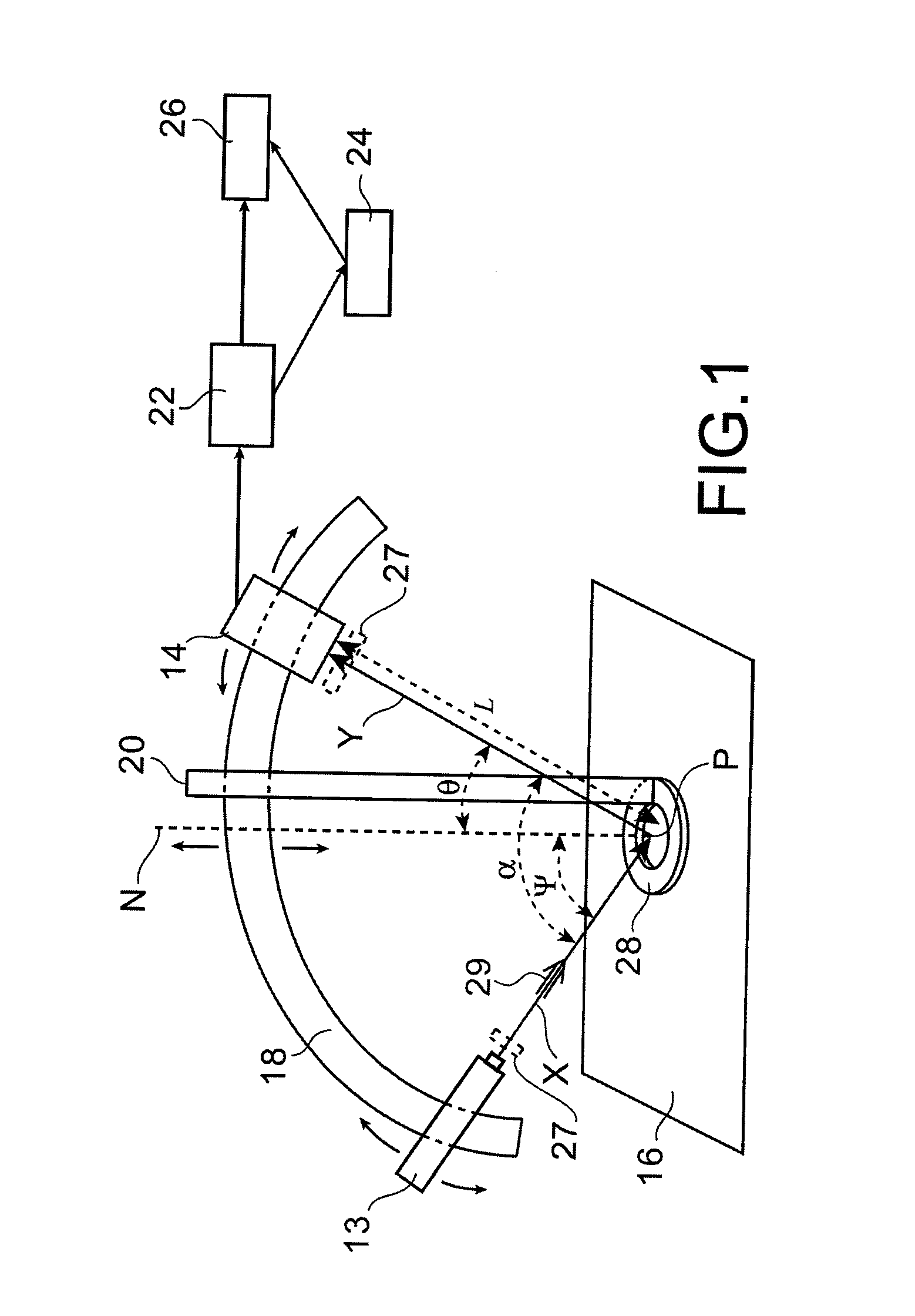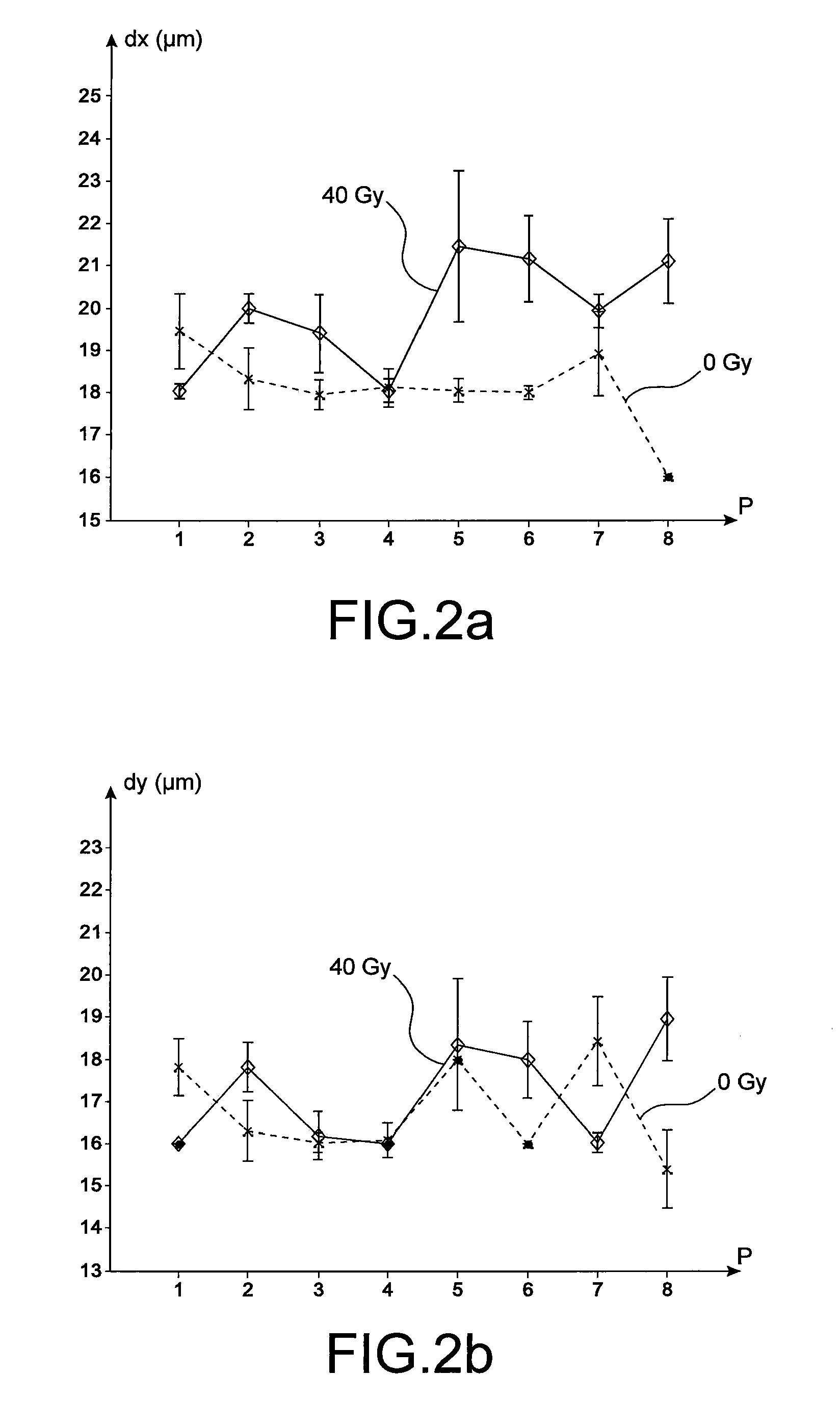Diagnostic and prognostic assistance device for physiopathological tissue changes
a technology of physiopathological tissue and diagnostic assistance, which is applied in the field of diagnostic and prognostic assistance devices for physiopathological tissue changes, can solve the problems of inability to make a device, the radiosensitivity difference of each type of cell involved and their intercellular communication, and the clinical effects of cutaneous radiological burns are known but difficult to predi
- Summary
- Abstract
- Description
- Claims
- Application Information
AI Technical Summary
Benefits of technology
Problems solved by technology
Method used
Image
Examples
Embodiment Construction
[0022]Thus, no non-invasive system that can be used in vivo is currently capable of assisting the diagnosis of the serious pathology constituted by cutaneous irradiation, even though it shows no clinical sign.
[0023]The present invention aims to overcome this drawback.
[0024]The technique, object of the invention, and its valorisation on a pre-clinical model constitute a progress for early diagnosis and prognosis and the health of the patient.
[0025]As will be seen, the device, object of the invention, enabling the acquisition and the processing of speckle figures particularly by a fractal approach, constitutes an advantageous device for in vivo diagnostic assistance for radiological burns and the prognostic of their evolution. The diagnostic and prognostic value of this device has been validated.
[0026]More precisely, the object of the present invention is a device for measuring, in vivo, properties of biological tissues, in particular for diagnostic and prognostic assistance for physi...
PUM
 Login to View More
Login to View More Abstract
Description
Claims
Application Information
 Login to View More
Login to View More - R&D
- Intellectual Property
- Life Sciences
- Materials
- Tech Scout
- Unparalleled Data Quality
- Higher Quality Content
- 60% Fewer Hallucinations
Browse by: Latest US Patents, China's latest patents, Technical Efficacy Thesaurus, Application Domain, Technology Topic, Popular Technical Reports.
© 2025 PatSnap. All rights reserved.Legal|Privacy policy|Modern Slavery Act Transparency Statement|Sitemap|About US| Contact US: help@patsnap.com



